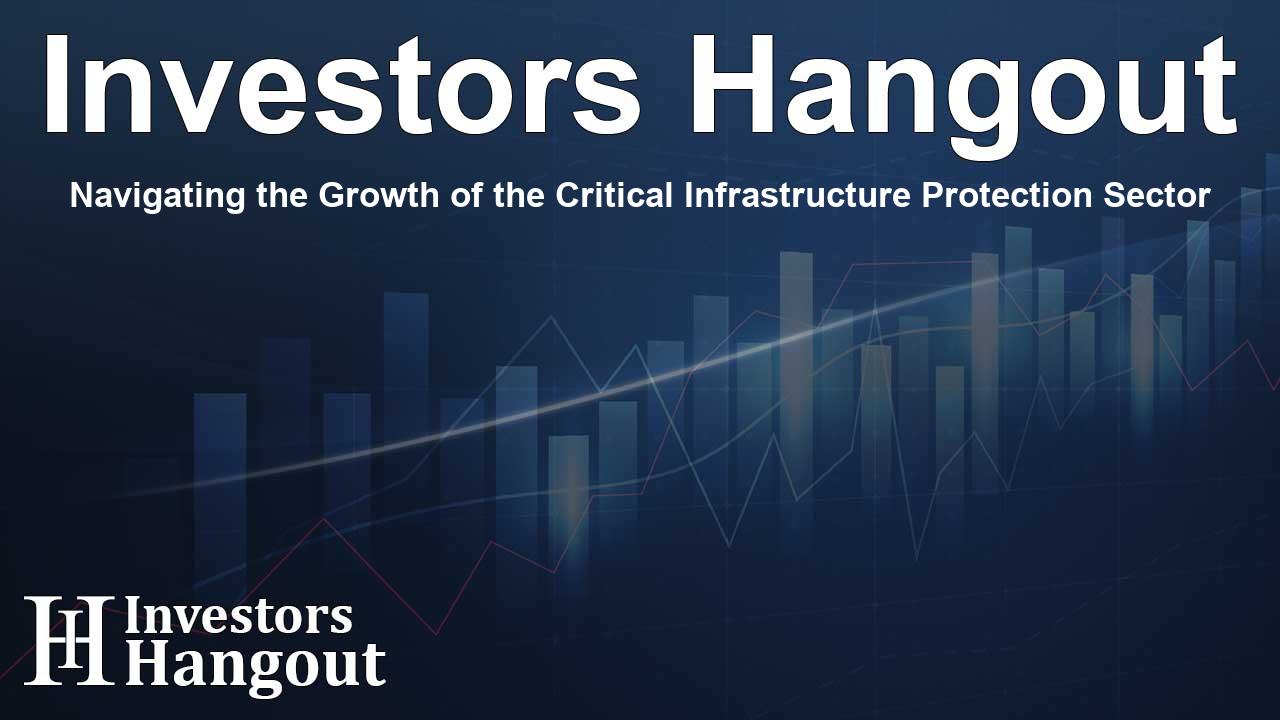Navigating the Growth of the Critical Infrastructure Protection Sector

Understanding the Critical Infrastructure Protection Market
The global Critical Infrastructure Protection Market is witnessing remarkable growth, expected to increase from USD 148.1 billion in one year to USD 178.3 billion over the following years. This ascent is fueled by an anticipated Compound Annual Growth Rate (CAGR) of 3.8%. As society becomes increasingly reliant on technology, the security of essential systems has never been more critical.
The Drivers Behind Market Growth
Several factors contribute to the expansion of the Critical Infrastructure Protection market. First and foremost, there has been a noticeable rise in cyberattacks targeting essential service systems. These threats prompt organizations to enhance protection measures, ensuring their infrastructure remains secure and operational.
Additionally, proactive government initiatives play a significant role. Stricter regulations and programs initiated by agencies endorse the importance of robust security frameworks. These efforts are not limited to one region but span across countries, indicating a universal recognition of the significance of critical infrastructure protection.
Technological Innovations Fueling Advancements
Various technological developments are enhancing the capabilities within the Critical Infrastructure Protection sector. From the Internet of Things (IoT) to improved cybersecurity software, organizations now have access to sophisticated solutions that prevent and mitigate potential threats.
Challenges Faced in the Sector
Despite advancements, challenges remain. A notable issue is the shortage of trained cybersecurity professionals capable of addressing the complexities of modern threats. This skill gap leaves organizations vulnerable as they struggle to keep up with evolving cyberattacks.
Another challenge lies in achieving interoperability among various protection solutions. Many organizations deploy disparate systems, creating gaps in security capabilities that could be exploited by malicious actors.
Emerging Opportunities in the Market
Even with challenges, the Critical Infrastructure Protection market presents numerous opportunities. The growing adoption of IoT devices across sectors opens avenues for enhanced security measures, driving the market's value upwards. Moreover, increasing investments in infrastructure will further escalate the demand for effective protection solutions.
Recognizing Key Players in the Market
Several leading companies are influencing the Critical Infrastructure Protection market, including:
- BAE Systems
- Lockheed Martin
- General Dynamics
- Northrop Grumman
- Honeywell
- Airbus
- Thales
- Hexagon AB
- Johnson Controls
- Motorola Solutions
These organizations not only provide robust security solutions but also invest in research and innovation to stay ahead of threats.
Trends Shaping the Future of Critical Infrastructure Protection
Several trends are emerging that will shape the Critical Infrastructure Protection landscape:
Quantum-Resistant Cybersecurity
The integration of Quantum-Resistant Cybersecurity technologies is becoming crucial in the CIP sector. These advanced systems address vulnerabilities inherent in traditional cybersecurity measures, defending against growing threats in a technologically evolving society.
Blockchain Technology
Blockchain technology is advancing from being just a buzzword to a practical security solution within critical infrastructure frameworks. Its decentralized and immutable nature ensures data integrity and enhances security, thereby supporting transparency across operations.
Big Data Analytics
Moreover, the rise of Big Data Analytics facilitates proactive threat detection. This technology streamlines the monitoring of vast amounts of data, honing in on unusual activities that may indicate security risks, thereby reinforcing the entire critical infrastructure security apparatus.
Conclusion: The Importance of Protective Measures
As the Critical Infrastructure Protection market continues to evolve, organizations must remain vigilant. With increasing reliance on technology, the potential risks heighten, necessitating comprehensive security strategies. BAE Systems, Lockheed Martin, and General Dynamics are just a few of the companies leading this charge to ensure that vital systems are safeguarded.
Frequently Asked Questions
What is the projected growth of the Critical Infrastructure Protection market?
The market is expected to grow from USD 148.1 billion to USD 178.3 billion by 2029.
What are the main drivers of growth in the Critical Infrastructure Protection sector?
Rising cyberattacks, government initiatives, and technological advancements are driving the growth.
Who are the key players in the Critical Infrastructure Protection market?
Key players include BAE Systems, Lockheed Martin, General Dynamics, and several others leading the industry.
What challenges does the Critical Infrastructure Protection market face?
Challenges include a shortage of trained professionals and issues with interoperability among solutions.
What trends are shaping the future of Critical Infrastructure Protection?
Noteworthy trends include the adoption of Quantum-Resistant Cybersecurity, Blockchain Technology, and Big Data Analytics.
About The Author
Contact Dylan Bailey privately here. Or send an email with ATTN: Dylan Bailey as the subject to contact@investorshangout.com.
About Investors Hangout
Investors Hangout is a leading online stock forum for financial discussion and learning, offering a wide range of free tools and resources. It draws in traders of all levels, who exchange market knowledge, investigate trading tactics, and keep an eye on industry developments in real time. Featuring financial articles, stock message boards, quotes, charts, company profiles, and live news updates. Through cooperative learning and a wealth of informational resources, it helps users from novices creating their first portfolios to experts honing their techniques. Join Investors Hangout today: https://investorshangout.com/
The content of this article is based on factual, publicly available information and does not represent legal, financial, or investment advice. Investors Hangout does not offer financial advice, and the author is not a licensed financial advisor. Consult a qualified advisor before making any financial or investment decisions based on this article. This article should not be considered advice to purchase, sell, or hold any securities or other investments. If any of the material provided here is inaccurate, please contact us for corrections.
